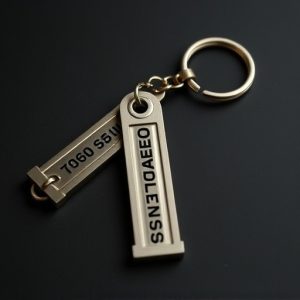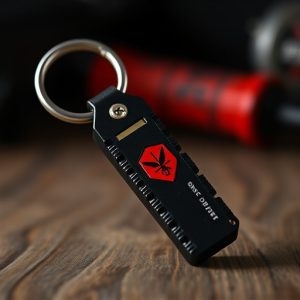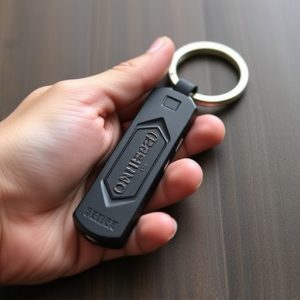Keychain Kubaton Pressure Points: Navigating State Laws on Self-Defense
The keychain kubaton with pressure points is a compact, powerful self-defense tool legal in many US…….
The keychain kubaton with pressure points is a compact, powerful self-defense tool legal in many US states, but regulations vary widely by location. These keychains target vulnerable areas to temporarily incapacitate attackers, offering tactical advantages while minimizing risk. Responsible ownership requires understanding state laws, secure storage, and child safety practices, ensuring it's used only as a last resort for self-defense.
In today’s diverse legal landscape, understanding the legality of self-defense keychains, specifically those equipped with pressure points (kubatons), is paramount for personal safety and responsible ownership. This comprehensive guide navigates state-by-state regulations surrounding these compact defense tools. From defining what constitutes a kubaton to exploring safe use practices, we demystify legal requirements and provide insights into tactical applications of keychain pressure points.
- Understanding Legal Definitions: What Constitutes a Kubaton?
- State-by-State Regulations: Exploring Legal Requirements
- Keychain Pressure Points: A Tactical Perspective
- Safe Use and Responsible Ownership: Rights vs. Responsibilities
Understanding Legal Definitions: What Constitutes a Kubaton?
In the context of self-defense, understanding what constitutes a keychain kubaton with pressure points is paramount. Legally, a kubaton refers to a small, portable self-defense tool designed to apply pressure to specific vulnerable areas of an attacker’s body. This handheld device often resembles a key chain and is intended for use in emergency situations to deter or incapacitate an assailant temporarily.
Keychain kubatons specifically target pressure points such as the eyes, throat, or groin—areas that can cause significant discomfort or even incapacitation when pressured correctly. These tools are typically made of sturdy materials like metal or high-impact plastic and are designed to be easily concealable, making them a popular choice for personal safety. However, it’s crucial to note that regulations surrounding the use and possession of such devices vary greatly from state to state.
State-by-State Regulations: Exploring Legal Requirements
In the United States, regulations surrounding self-defense keychain tools like the keychain kubaton with pressure points vary greatly from state to state. Each jurisdiction has its own set of laws and restrictions on what constitutes legal self-defense and how such devices can be carried. For instance, some states allow concealed carry of such tools if they meet certain criteria, while others have stringent regulations or outright ban them. Understanding these legal requirements is crucial before considering carrying a keychain kubaton for self-defense.
State laws often dictate the level of force that can be used in self-defense, and this directly impacts the potential legality of pressure point tools. Some states permit the use of reasonable force to protect oneself, while others have more specific rules regarding deadly or non-deadly force. Additionally, regulations around age restrictions, required permits, and registration of self-defense devices vary widely. Therefore, it’s essential for individuals considering carrying a keychain kubaton with pressure points to research their state’s specific legal requirements to ensure compliance and personal safety.
Keychain Pressure Points: A Tactical Perspective
A keychain kubaton, a small and discreet self-defense tool, utilizes pressure points to provide a tactical advantage in various scenarios. When considering self-defense, understanding pressure points—specific areas on the human body that, when targeted, can cause rapid incapacitation or pain—is crucial. In the context of a keychain kubaton, these pressure points are strategically chosen for their effectiveness and minimal risk of permanent harm.
The design of a kubaton incorporates these pressure points, making it an efficient tool for self-defense in close-quarters encounters. By applying precise pressure to sensitive areas like the eyes, throat, or groin, users can disable an attacker without resorting to excessive force. This tactical perspective emphasizes the kubaton’s versatility and potential as a reliable defense mechanism when faced with unexpected threats.
Safe Use and Responsible Ownership: Rights vs. Responsibilities
The keychain kubaton with pressure points, a popular self-defense tool, highlights the complex balance between individual rights and responsibilities. While possessing such a device may be legal in many states, users must understand its safe use to avoid potential consequences. Responsibility extends beyond mere ownership; it encompasses proper handling, storage, and deployment during emergencies.
Knowing the legal implications and understanding your rights is crucial. Users should be aware of their state’s specific laws regarding self-defense tools and keychain kubatons. Moreover, practicing responsible ownership involves keeping the device out of reach of children and adhering to local regulations. This ensures that the keychain kubaton serves its intended purpose as a last resort for self-defense while promoting public safety.
In conclusion, while a keychain kubaton with pressure points can be a handy self-defense tool, it’s crucial to understand and adhere to state-by-state regulations. Knowing what constitutes a kubaton and the legal implications is essential for responsible ownership. Balancing rights with responsibilities ensures the safe use of such devices, promoting personal safety without causing harm or legal repercussions.


